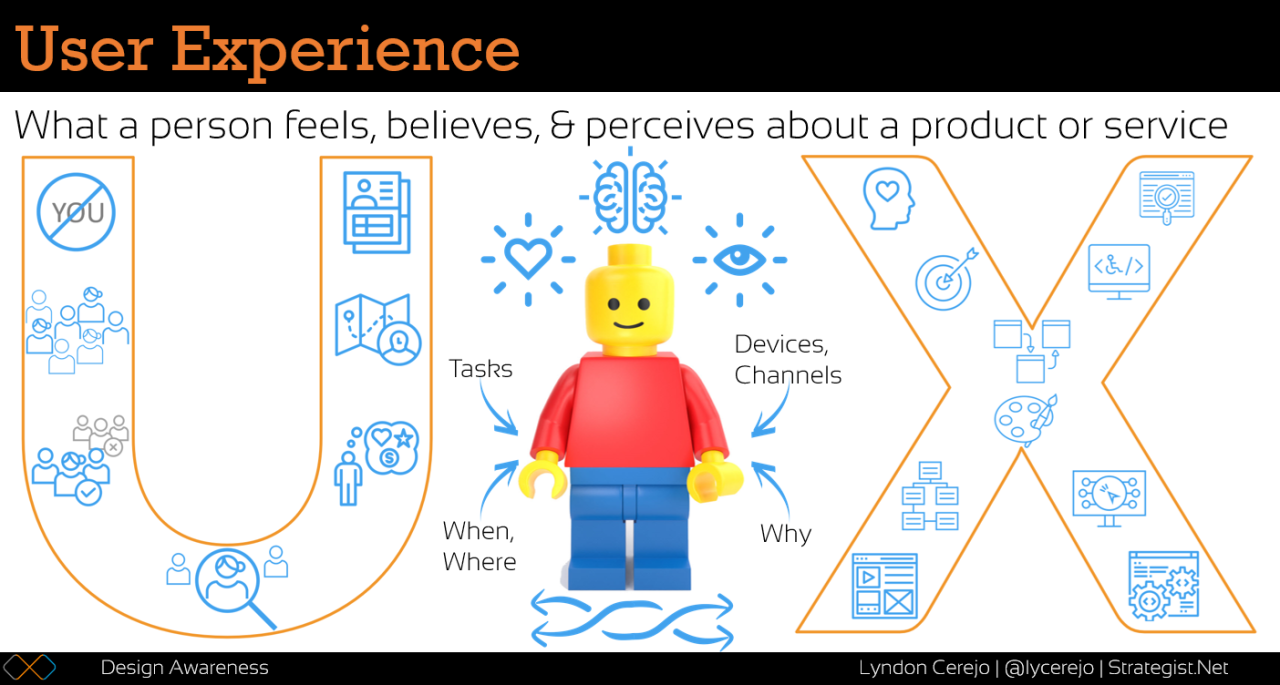
User Experience
This is part of a series demystifying design and creating design awareness. Previous posts covered Affordance, Branding, Chunking, Dark Patterns, Ethnography, Findability, Gestalt Principles, Hick's Law, Inclusive Design, Journey Map, Kerning, Learnability, Mental Models, Navigation, Ockham's Razor, Personas, Qualitative & Quantitative Research, Recognition Over Recall, Satisficing, and Think Aloud Method.
User eXperience (UX) includes everything that a user feels, believes, and perceives before, during, and after interacting with a product, service, or a brand. It is a result of a user trying to achieve a goal in a certain context, using the experiences designed by companies.
Let’s look at that through the example of ordering pizza. These days, you can easily order a pizza using voice, messenger, text, tweets, smartwatch, or smart TV. However, that positive interactive experience can quickly be forgotten, and the overall experience ruined, if the order is incorrect, the pizza is delivered cold and soggy, or even if the delivery person has a bad attitude!
The title image is a summary of my entire training course on User Experience, so let me break that down into three parts, starting with what a user feels, believes and perceives (shown above the person), before, during and after (below the person), and their context of use (shown on either side of the image)
Studies show that companies that create good user experiences see an increase in customer satisfaction and loyalty, lower costs of acquisition and support, and perform better in the market. Better market performance is tracked by the Design Value Index (DVI), which tracks the stock value of a portfolio of companies committed to design as an integral part of their business strategy, compared to the Standard & Poor’s (S&P) 500, which is good representation of the US stock market. For the past few years, the 16 companies that are tracked have shown an excess of 200% return over the S&P.
A design is considered good if it is:
- Useful – Users can accomplish their goals
- Usable – Users can easily complete their tasks
- Desirable – Users enjoy their experience
Good user experiences can be designed using a User-Centered Design (UCD) methodology, which keeps the user actively involved in the entire design process.
Realizing that we are not the user, we identify the main user groups, study them, and capture the insights in the form of user requirements, journeys and personas, depicted in the image below.
We then design the experience for these users by organizing and presenting content and functionality through information architecture, interaction design and visual design, with an underlying foundation of usability and accessibility, as shown below.
As you can see from the image above, user experience is a combination of many distinct elements, the user interface being one, usability being another. Which is why you often see the memes that UX is not UI and UX is not usability.
Takeaways
- User Experience is a result of a user trying to achieve a goal in a certain context, using the experiences designed by companies.
- UX is a combination of many different elements like content, functionality, design and usability, which have to be useful and desirable to users
- UX is not UI and UX is not Usability; UI and Usability are just two of many factors that constitute UX
Are there any design terms you'd like to have discussed? Please let me know in the comments or in a message.


